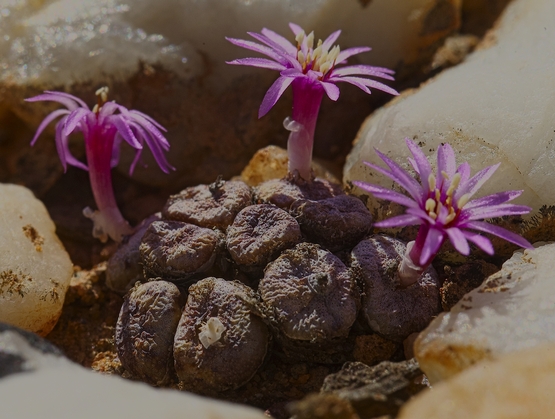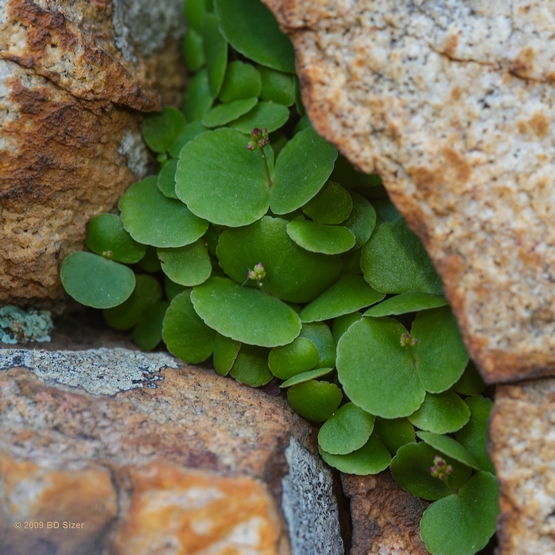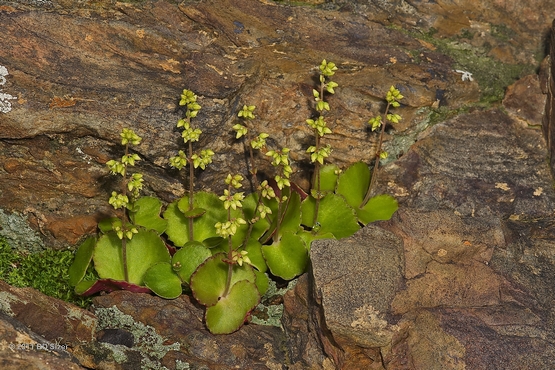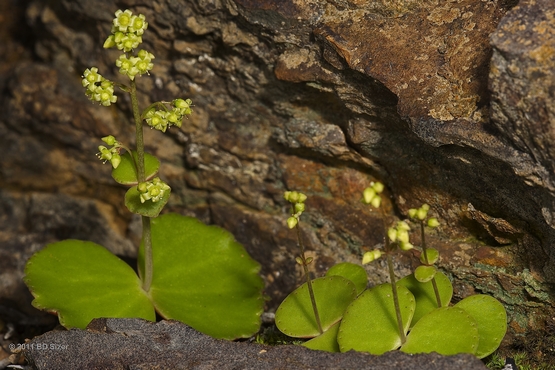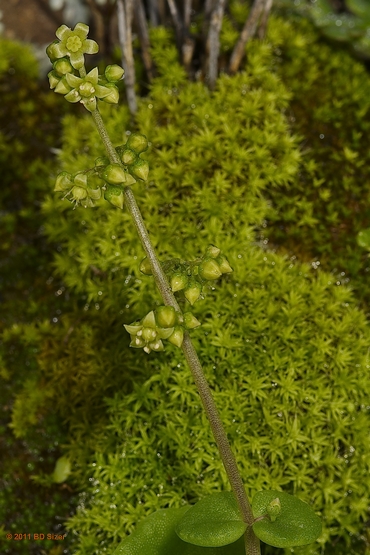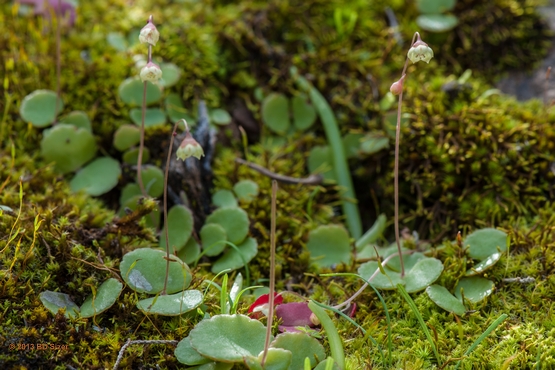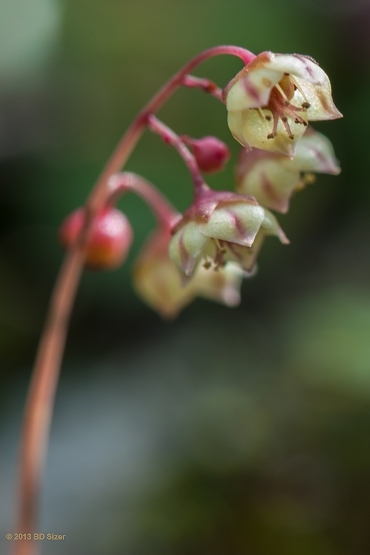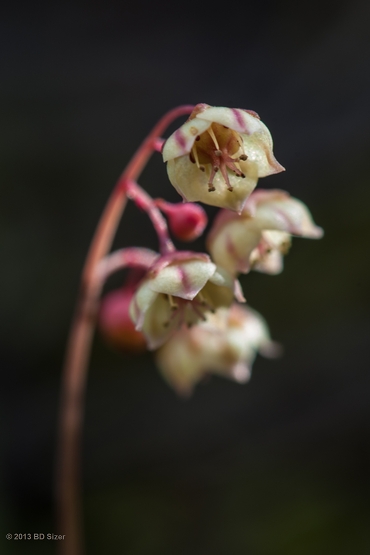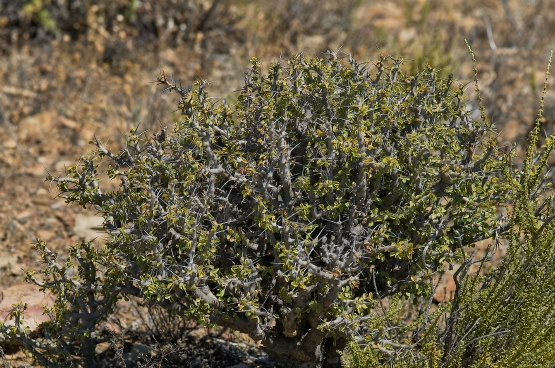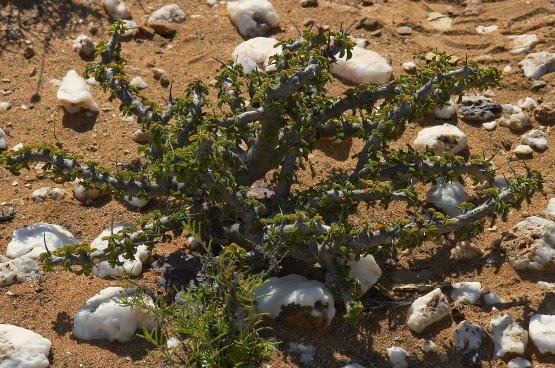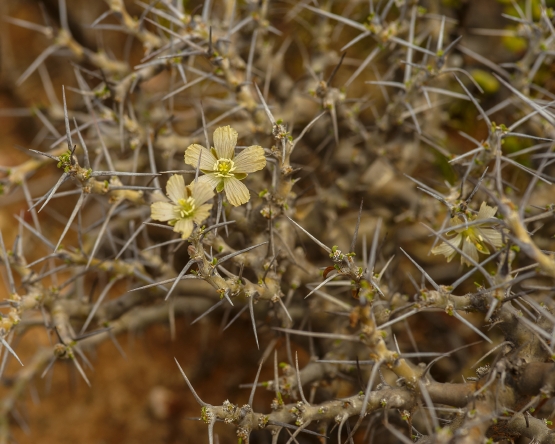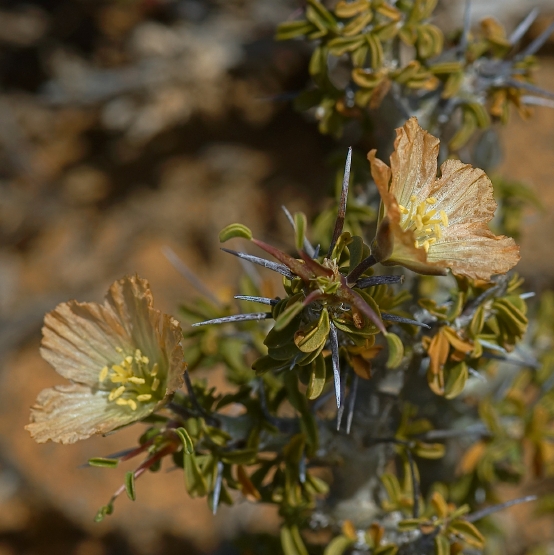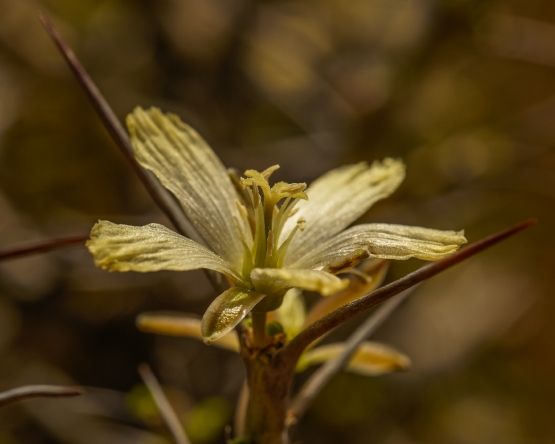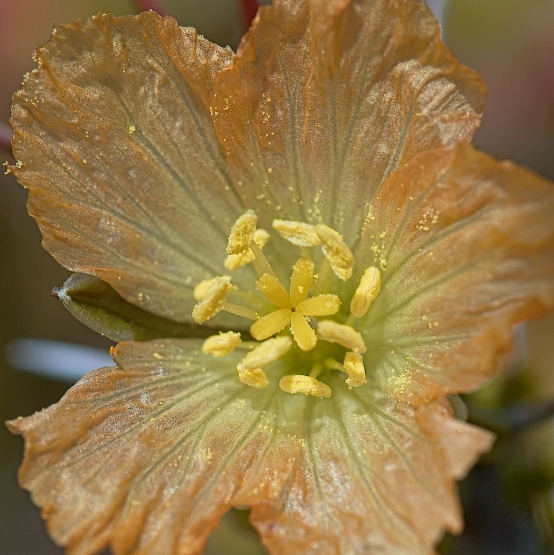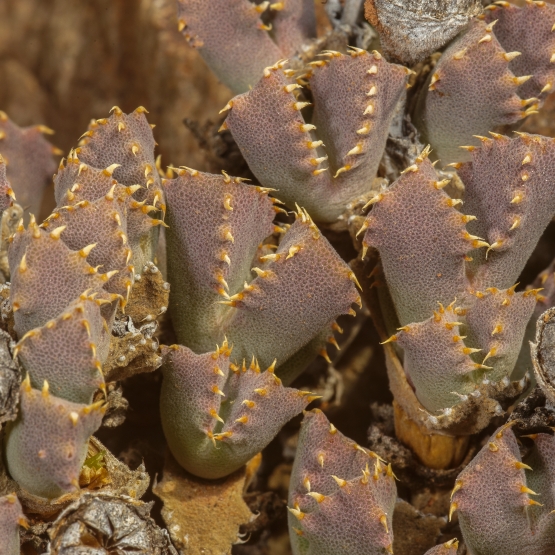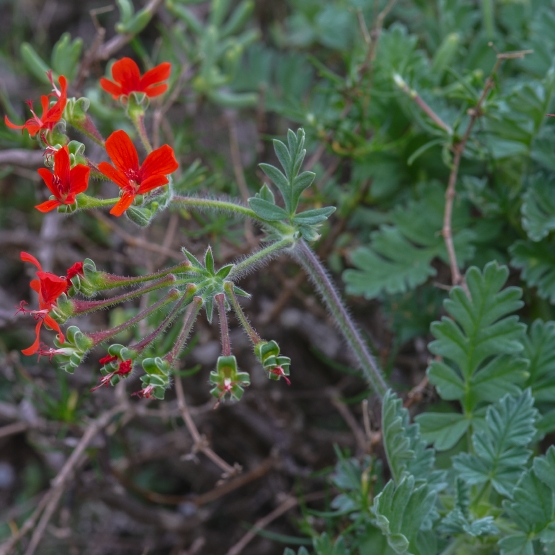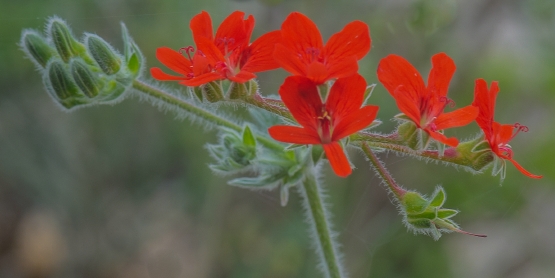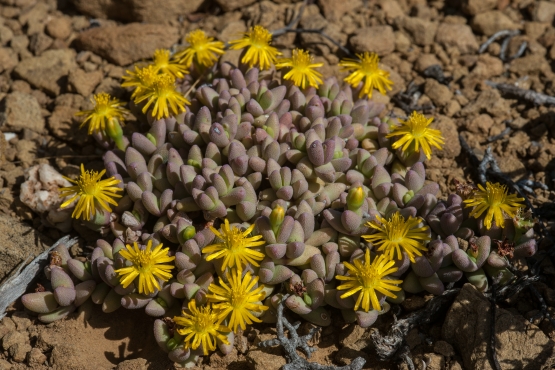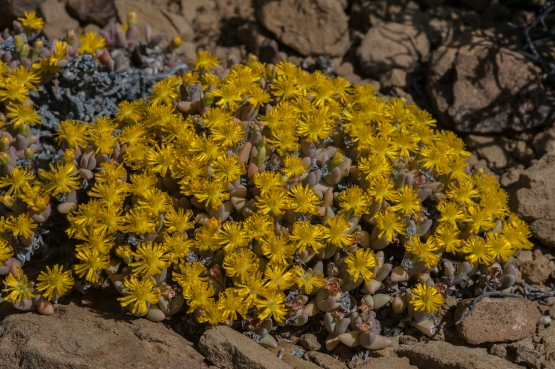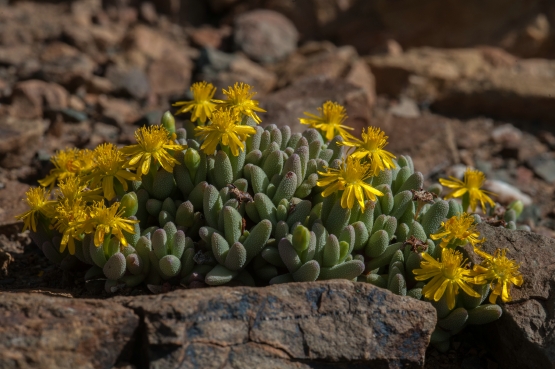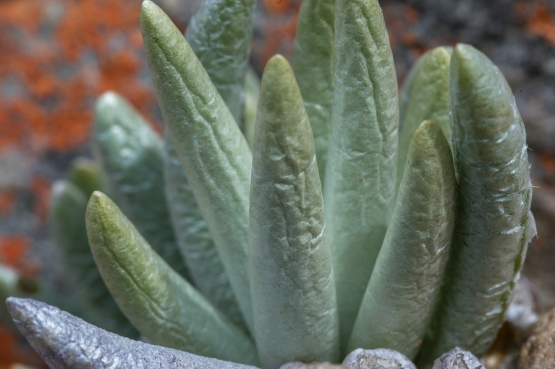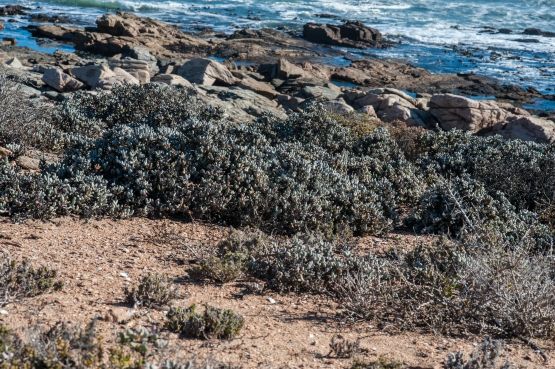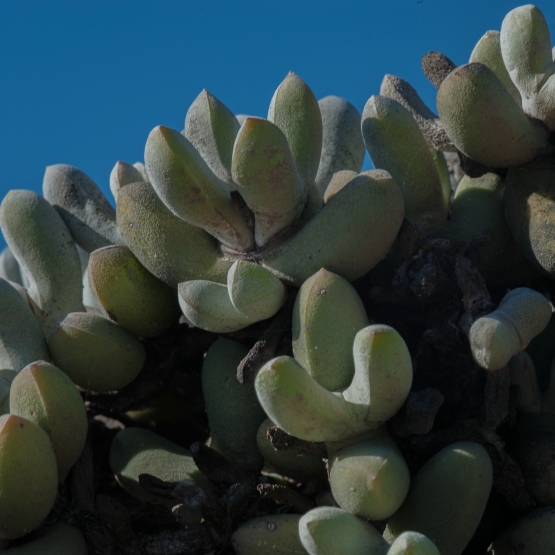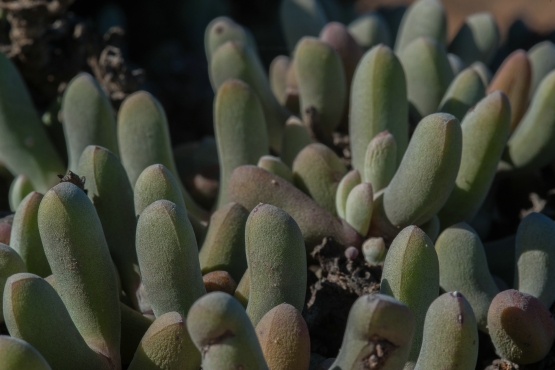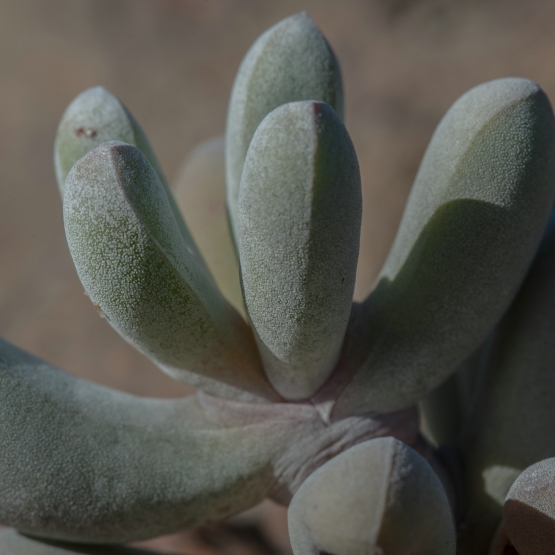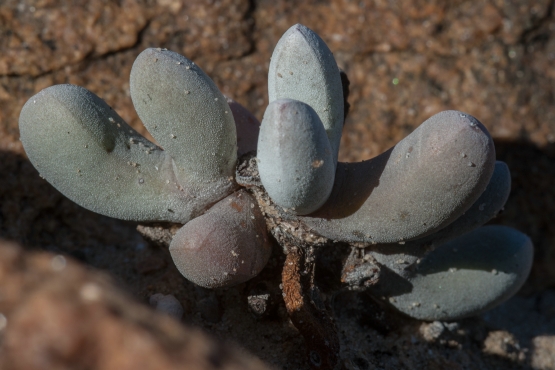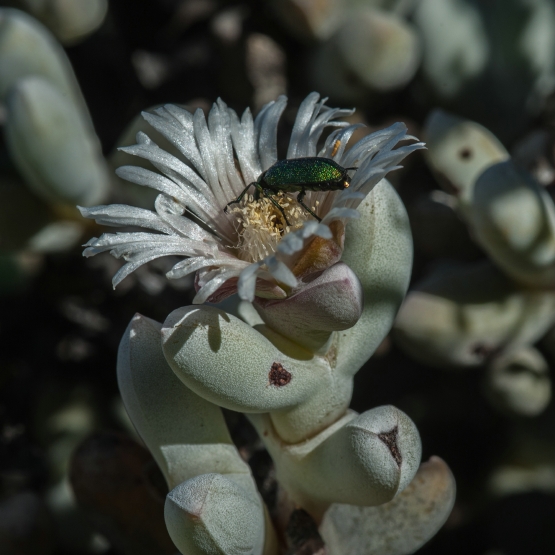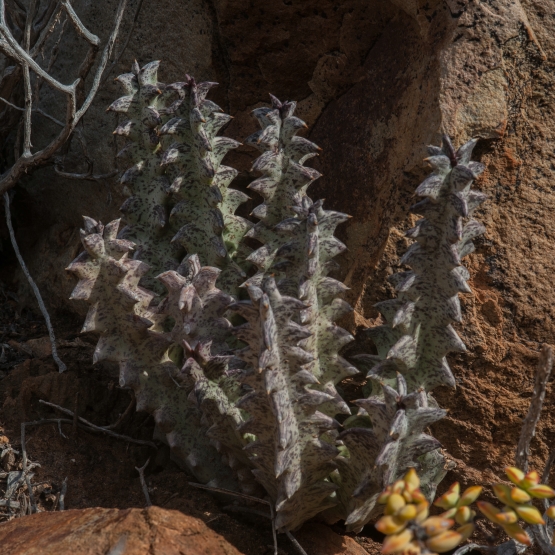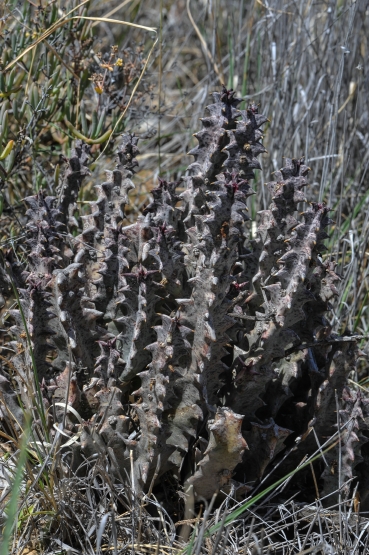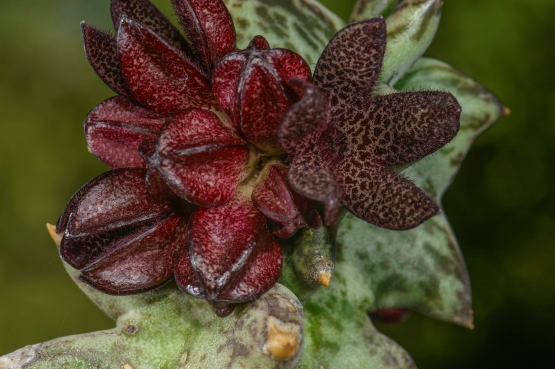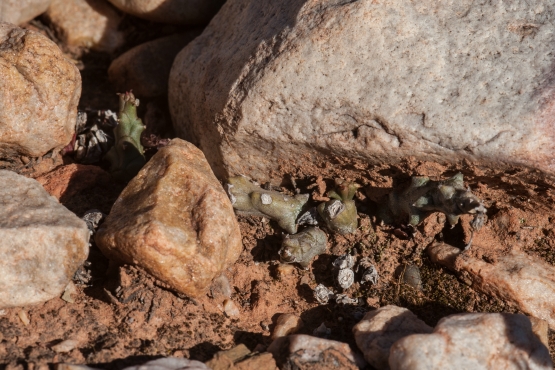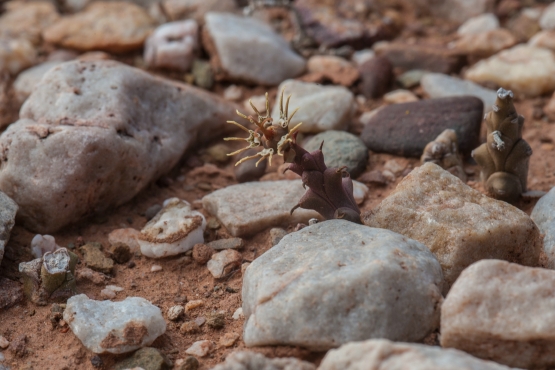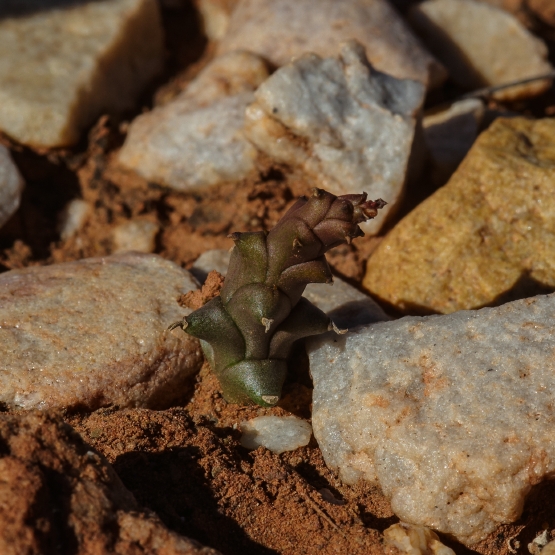This plant only occurs near Riethuis in Namaqualand, where it grows in saline quartz flats. Although locally common, the plants are often not easy to find.
Pictures taken 1 April 2012.
Tag: South African succulents
Crassula umbella
This is a member of an interesting little group of tuberous Crassulas. It occurs from the Richtersveld to the Little Karoo, usually on south-facing (shadowy) slopes under shrubs and especially under overhanging rocks.
The flowers appear in July to September and are described as star-shaped and white to yellowish green.
That is exactly as I always saw them in the wild, so that was the image that was imprinted on my brain.
A few weeks ago my wife and I went for a short drive in the area and to the northeast of town I found quite a few plants that looked like C. umbella but with rather different flowers.
The plants clearly belonged in the same group as C. umbella, so I looked up the relevant descriptions, but none of them fitted.
Obviously I had been to hasty, for when I started to reread the descriptions the problem was soon solved. The Flora of Southern Africa, vol. 14, by H. R. Toelken, says : “C. umbrella is a very variable species with several local forms ………………………………….
3. From Montagu westwards to near Worcester plants tend to have ovate corolla lobes with an acute to acuminate apex and slightly longer squamae. The somewhat larger flowers are cup-shaped and usually more or less turned downwards.”
As the following pictures show, this description fits the plants near Montagu to a T.
For the last picture I moved the camera slightly to get a darker background, so that the beautiful little flowers stand out better.
Monsonia salmoniflora (= Sarcocaulon salmoniflorum)
It is always a bit sad when a name that you have known for many years, is replaced by another one. This is even more so if the old name had a certain appeal to you, e.g. because it sounded nice or had a meaning that made it easy to remember. Some of these name changes are unavoidable as they are the result of following the nomenclatural code. In other cases it is more a matter of opinion, so much so that one sometimes wonders what the value of the new name really is. Probably better not to open this can of worms here.
In 1996 the genus Sarcocaulon was included in the genus Monsonia based on molecular studies and it seems that the new arrangement has been more or less generally accepted by now.
M. salmoniflora forms shrublets up to 40 cm tall and is widely distributed in Namibia and South Africa. The plants flower mainly in Oct.-Dec. The flowers are up to 3 cm across with colours ranging from pink to orange.
Odontophorus marlothii
Pelargonium fulgidum
Rhinephyllum graniforme
Here is an example of how knowing the meaning of the name actually may help to recognise the species. (Rhinephyllum = leaf like a file, referring to the rough surface of the leaves; graniforme = shaped like a grain). The genus occurs from Laingsburg in the Western Cape northeastwards to the southern tip of the Free State.
The flowers are rather special in the sense that they open only late in the afternoon or in the evening.
Photographed east of Prince Albert 3 Nov. 2012.
Senecio scaposus
This species is found sporadically from Montagu eastwards to the Eastern Cape, usually on rocky outcrops. The leaves are covered in silvery grey felt, protecting the plant against desiccation.
The first picture was taken southwest of Ladismith, the second one northwest of the same town and the last one at the foot the Rooiberg near Calitzdorp.
Wooleya farinosa
The genus Wooleya has never had more than one species, which is rather uncommon.
The plants occur only on the sandy coastal plains of Namaqualand near the sea, where there is regular fog. They become up to half a meter tall and up to 70 cm in diameter. The leaves look as if they are covered in flour (farinosa means just that).
Photographed at Hondeklipbaai, 31 March 2012.
Quaqua pillansii
It seemed appropriate to devote this first post from my new home to a plant that was first discovered near Montagu. Nowadays it is known to be widely distributed from just south of Ceres to the area north of Port Elizabeth. In a genus where most plants look rather dull when not in flower, this is probably the most handsome. It is a robust species, forming shrubs of almost half a meter tall and even more in diameter. (The only Quaqua that is occasionally bigger is Q. mammillaris). In spite of their size, the plants are not always very easy to find. The shape and mottling of the stems provide a nice camouflage.
The two plants in habitat were photographed in early November at the northern foot of the Rooiberg pass near Calitzdorp. The flowering plant is a cultivated one.


